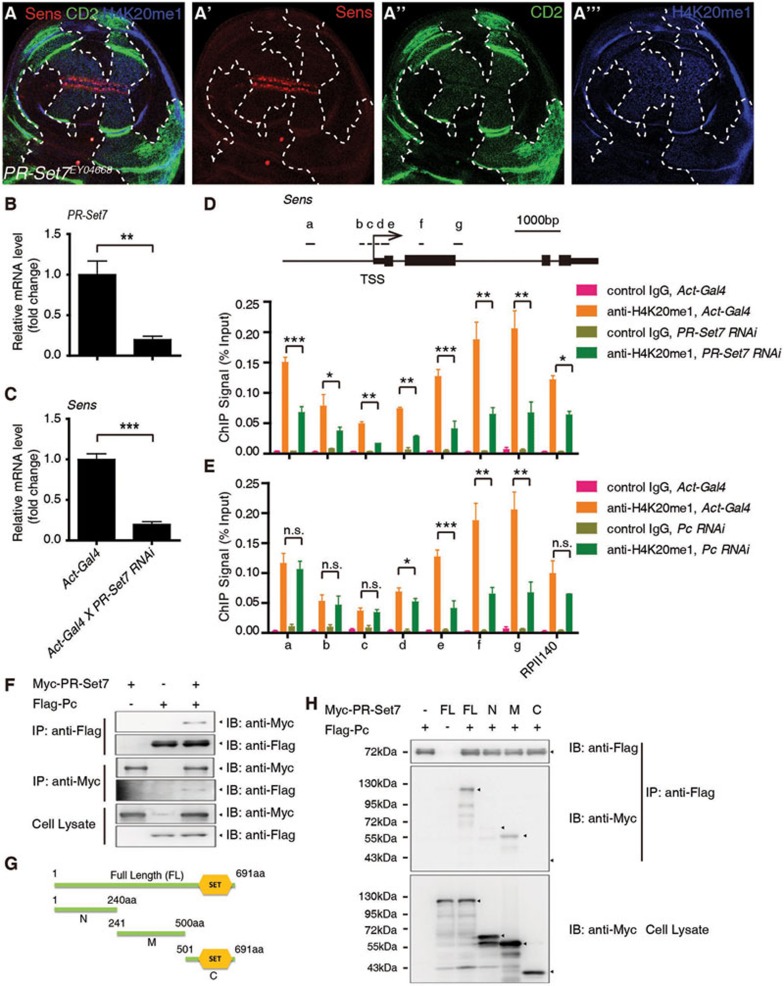Figure 3.
Pc positively regulates Sens expression by regulating H4K20me1 catalyzed by PR-Set7. (A-A''') A wing disc carrying PR-Set7EY04668 mutant clones and immunostained with anti-Sens antibody (red), anti-CD2 (green) and anti-H4K20me1 antibody (blue). The clones are CD2 negative, and their boundary is demarcated with dashed lines. (B-C) RT-qPCR analysis of mRNA levels of PR-Set7 (B) and Sens (C) in Act5c-Gal4 or Act5c-Gal4/uas-dsRNA PR-Set7 wing discs. (D) ChIP-qPCR analysis using control IgG or anti-H4K20me1 antibody at the Sens locus with Act5c-Gal4 wing discs or Act5c-Gal4/uas-dsRNA PR-Set7 wing discs. Upper panel illustrates the positions of the primers used for the qPCR assay at the Sens locus. In the lower panel, ChIP signal levels are represented as percentages of input chromatin. (E) ChIP-qPCR analysis using control IgG or anti-H4K20me1 antibody with Act5c-Gal4 wing discs or Act5c-Gal4/uas-dsRNA Pc wing discs at the Sens locus. ChIP signal levels are represented as percentages of input chromatin. (F) S2 cells were transfected with combinations of DNA constructs as indicated. After 48 h of transfection, lysates from transfected S2 cells were immunoprecipitated with anti-Flag antibody or anti-Myc antibody. Western blots were performed to analyze the presence of Flag- or Myc-tagged proteins. (G-H) Mapping of individual domains responsible for the interaction of PR-Set7 with Pc. Schematic drawings of PR-Set7 full length (FL) protein and different fragments (G). The SET domain that catalyzes H4K20me1 is located in the C-terminal (C) part of PR-Set7, while no significant domain is in the N-terminal (N) and middle (M) regions. A co-IP-WB shows that PR-Set7 interacts with Pc mainly through its M region (H). Means ± SD; n = 3. n.s., no significant difference. *P < 0.05, **P < 0.01, ***P < 0.001. Unpaired, two-tailed Student's t-test. See also Supplementary information, Figure S3.

